Music Theory for Beginners: A Quick Guide
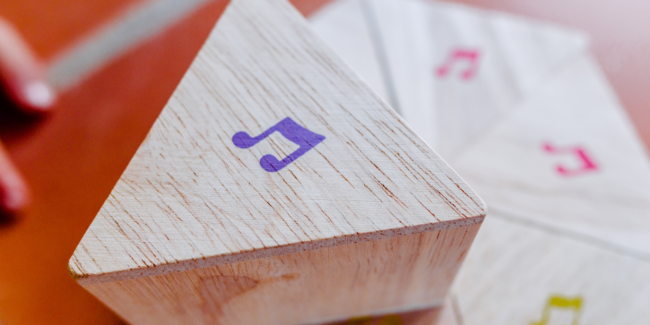
This article will teach you the fundamentals and explain the importance of music theory for beginners.
Music theory is the study of reading, writing, and interpreting music. Like in any language, we use a script to communicate what we hear visually. These shapes and patterns include note heads and stems, time signatures, key signatures, staffs, barlines, chord symbols, sharps, flats, etc.
Getting on top of this information takes considerable time, training, effort, and persistence. Luckily we’ve got you covered on the basics in this short article about music theory.
Why should you learn music theory?
Learning how a language works is different from learning how to speak. So too, learning music theory is not the same as learning to play music.
Most people acquire the foundations of their mother tongue without understanding grammar mechanics. Likewise, you can learn to play music without being able to read notation or understand the theoretical terminology. But there is no doubt that learning theory gives you the tools to express yourself more freely and deeply — in music or in any other language.
For a beginner, learning music theory gives context and meaning to all the sounds you hear.
The musical ear takes time to develop. As it does, it is important to have visual representations of sounds to strengthen the learning. As you begin to grasp the names of the notes, the symbols of rhythmic value, the concept of a key signature, and the structure of chords, your understanding of music as a whole develop. You’re able to hear and express more in your playing.
The fundamentals of music theory.
In this section, we dive into some basic concepts of music theory. This opens doors for you to enter and explore in your own time, with a teacher, or with an online learning service, such as our Simply Piano app.
Notes and staff.
When an instrument produces a sound, that sound vibrates at a particular frequency. In music theory, we call the frequency of a sound pitch and organize these frequencies in a system of symbols we call notes. There are twelve notes, which repeat themselves across high and low registers of pitch.
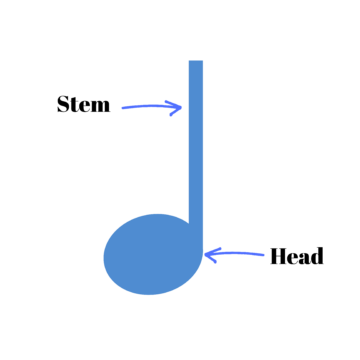
Notes appear in various ways, but all have a circle and sometimes a line. The vertical line attached to the note is called a stem. The circle is the head, and it could be full or empty. These determine the rhythmic value of the note.
Learn more about How to Read Sheet Music on our blog.
We use letters from A to G to name seven of the twelve notes and use sharps and flats for the remaining five. The symbol sharp (#) means slightly higher than the note it’s in front of, and flat (b) means slightly lower. Flat and sharp notes have two names, depending on the context. In the end, it looks something like this:
[insert table of note names]
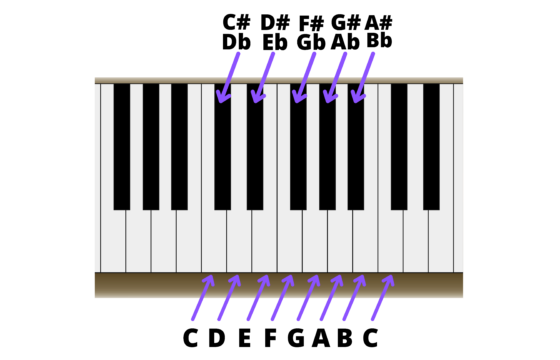
The notes are written on a staff, a stack of five horizontal lines with four spaces between them. Each line and space represent a note, with the low notes on the bottom lines and the high notes on the top. To write notes below or above the staff, we use ledger lines. These are short horizontal lines written through or below the circle of the note.
Clefs, key signatures, and scales.
A clef symbol appears on the far left side of the staff. It indicates which note falls on which line. The range of your instrument determines the clef you use so that most of the notes sit on the staff and not the ledger lines.

Treble Clef
You use the treble clef for piano to write music for your right hand. The center of the circle of the treble clef sits on the second line from the bottom of the staff and indicates the note G, which sits above the C in the middle of the piano (known as middle C). This is why it’s also known as G clef.

Bass Clef
We use the bass clef to write music for instruments with a lower register, such as the piano’s left hand or a bass guitar. The line between the two dots of the bass clef is an F below middle C. This is why it’s also known as the F clef.

Key Signatures
To the right of the clef, the key signature appears. It indicates how many sharps or flats are in the music by placing the # and b symbols on the relevant lines and spaces. In this way, the key signature often tells the song’s scale.
A scale is a series of seven notes with specific intervals between them. This creates a pattern that can be superimposed on any starting note to create a scale of the same character. For example, major scales starting on G, C, D, or E all have different notes and different amounts of sharps and flats, but all sound like a major scale. This is because the pattern of intervals between the notes — and not the notes themselves — determine the scale’s sound.
Not all sharps and flats appear within the key signature. In this case, the sharp and flat symbols are next to the notes as they appear on the staff.
Time signatures and rhythmic values.
The time signature is to the right of the key signature, just before the actual notes appear. This indicates the division of rhythm in the song, alongside the bar lines, which create vertical divisions along the horizontal staff lines to group the notes according to rhythm value.

The top number of the time signature is the number of beats per bar. The bottom number of the time signature is the type of beat (half note, quarter note, eighth note). You can read more about time signatures in our blog post How to Play Music in 4/4.
Once you know the time signature, how the rhythmic values of notes are symbolized and communicated becomes clear.

A whole note is worth four beats and is written as an empty circle with no stem.
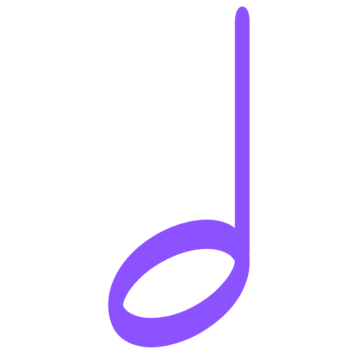
A half note is worth two beats and is written with an empty circle and a stem.
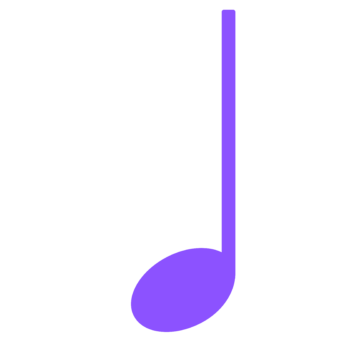
A quarter note is worth one beat. So, in a 4/4 time signature, for example, there would be an equivalent of four quarter notes in a bar. It is written as a full circle with a stem.
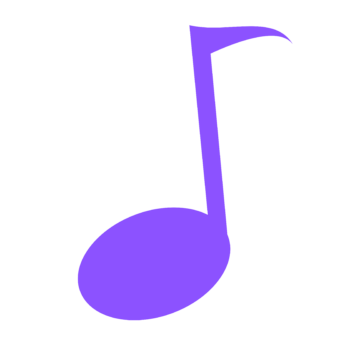
An eighth note is worth half a beat. It is written as a full circle with a stem and a tail.
So, what now?
It’s all good to talk about learning music theory or read an article like this that outlines the basics. But to internalize these concepts, there needs to be consistent engagement with them through practice and exercises.
We recommend using our Simply app, which provides interactive learning and step-by-step guidance in music theory. You can use it from the comfort of your home, at your own pace, and progress according to your learning and needs. If you study regularly, with love and patience, everything will fall into place.









